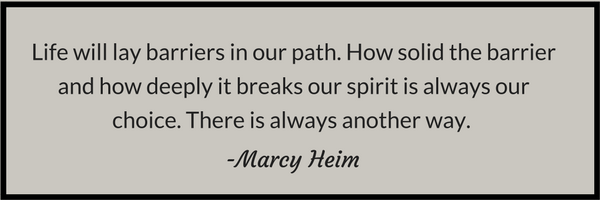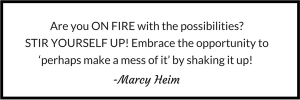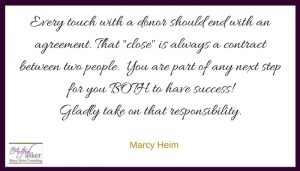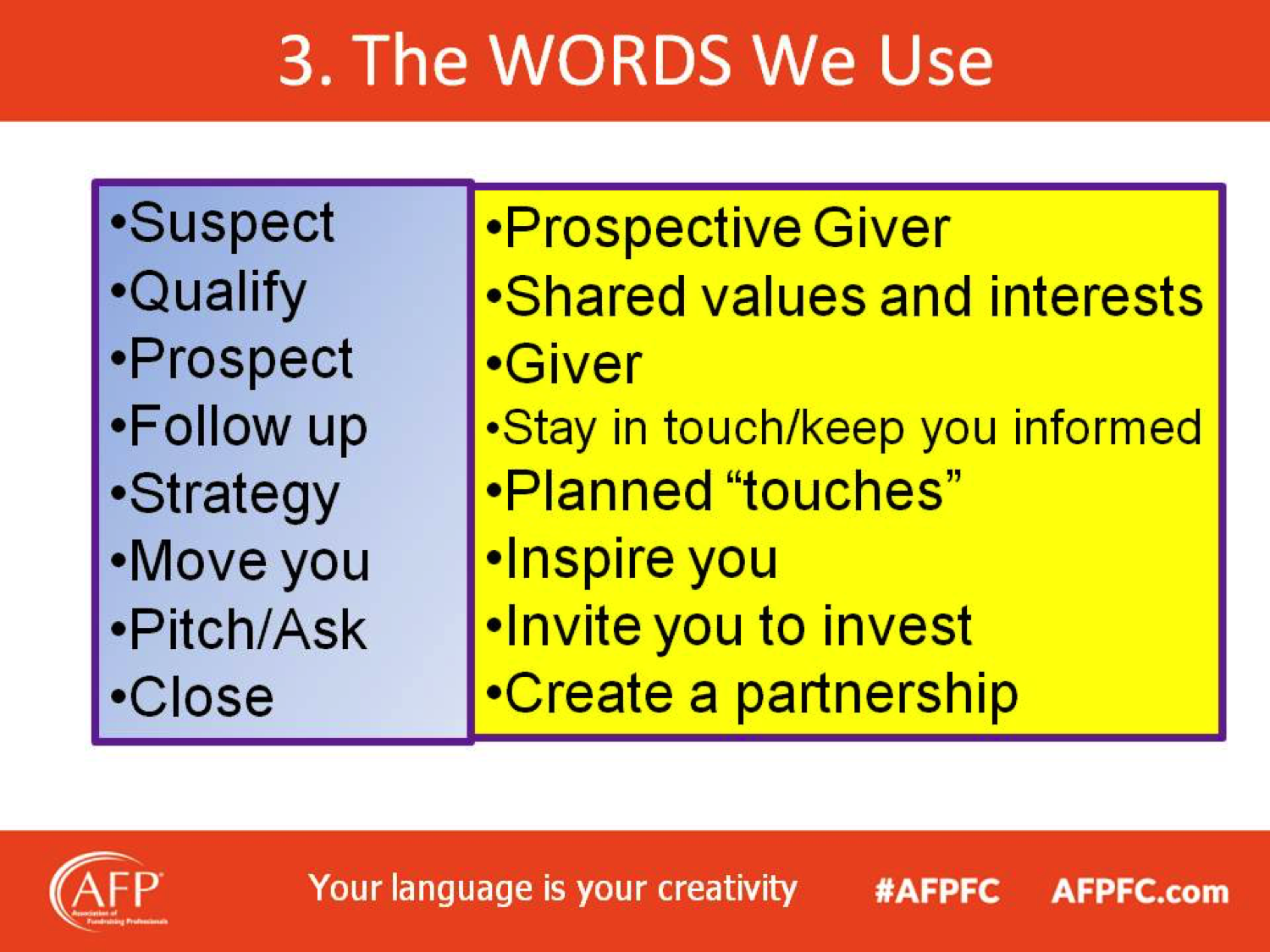
For several months, our road has been torn up – beautiful old trees cut down, wires buried, bike path roughed in, and a round-about and medians added. We are just now about to lay the final new pavement.
The ROAD CLOSED sign has been my daily companion for almost 6 months. For my neighborhood, Lacy Road is our only way to get in and out. Period. My car is constantly dirty, the wait can be up to 10 minutes for the flagman to give me a turn, and the loose gravel and holes at times make the trek feel like a safari adventure. Only this week, as you can see, did the first layer of new blacktop appear!

Every day as I slowly make my way down our ever-under-construction road, I consider how this mirrors our lives. What started out as something really annoying has honestly been tremendously empowering. You see, every day I DRIVE THROUGH THE BARRIER! Every day I drove over the bumps and gravel..now the rough new pavement. Every day I get to where I want to go ANYWAY!

A barrier is defined as a fence or other obstacle that prevents movement or access.
It is also defined as a circumstance or obstacle that keeps people or things apart or prevents communication or progress; “a language barrier”.
What are the barriers we come up against? Perhaps the better question we need to ask ourselves… “Is this really a barrier?”
Let me give you an example.
I recently had the privilege of keynoting, “Cumbre Iberoamericana de Desarrollo Institucional” (CIDI) in Mexico City at the invitation of Carlos Madrid, the President of the Junta De Asistencia Privada Del Distrito Federal. AFP Mexico Foundation sponsored my talk, “The Power and Joy of Philanthropy” as part of this conference. The conference presented many barriers for me.
- I can say, “Hola.” (After the first day I figured out it is really “Ola” no “H”) When I was introduced at the opening ceremonies the guy next to me jabbed me so I knew to stand up and wave a greeting.
- How do I sing, “People love to give me Money!” and my other songs? How do I slow down enough for interpretation? How do I share my slides in a meaningful way? Yikes.
- As part of our arrangement, my book, “Empowering Your Board to Serve as Effective Development Ambassadors” was to be translated into Spanish and given to the conference participants. This proved to be a bigger barrier than first anticipated as there aren’t really even words for some of my key phrases!
- The night before my talk the earthquake struck and folks within our conference family were not alive to be with us. How would I deal with this?
There were certainly barriers of the “circumstance or obstacle that keeps people or things apart or prevents communication or progress” definition variety!
But here is what I learned.
- No barrier could keep down my passion for sharing my message of positive mindset and the power and joy of giving.
- No barrier could prevent my music from energizing others.
- No barrier could stop a smile and a hug from being returned to me.
- No barrier could stop us from staying the course at translation of my book and my slides. (Thank you, Rose Sandoval, AFP Mexico.)
- No barrier could block the support we get from sharing with each other….even with an earthquake in the middle.
- No barrier could keep me from communicating even with “Hola” as my only Spanish.
- No barrier could take away the sincere gratitude I felt for speaking (even without being able to read the plaque).
- No barrier could block my determination to share a sincere and honorable purpose.
We encounter barriers every day.
- Perceived tight budgets.
- Staff out on leaves or vacant positions.
- Not enough major donor prospects.
- Too many things on our plates.
- Illness.
- Program staff and leadership that doesn’t “get” fundraising.
- Competition from so many non-profit causes.
- Lack of technology or equipment.
- Changing grant funding.
- Flat tires.
- Increasing costs of building mid-campaign.
- Leadership changes.
- Even…..hurricanes and earthquakes.
I’m sure you can add your own barriers to getting done what you want to do.
Barriers exist. But how tall, or wide, or menacing, or scary, or impossible they are…? That is ALWAYS YOUR CHOICE to determine. How frustrated, angry, discouraged, down, or ranting you get….? That is ALWAYS YOUR CHOICE to determine.
You can take a detour, drive through the barricades, ask for help, plan in some extra time for the delays, stay upbeat and use your amazing minds to create new ways. Get going! Year-end is just around the corner and your missions need you to be ready to navigate the barriers.
Let me hear you, “I create my life!”
You do. And I know that there really are no barriers that can stand in your way.
Invest in Joy!


Marcy Heim is a trusted authority in the development profession and helps organizations and educational institutions boost their major gift programs through artful, long-term relationship building that dramatically increases fundraising success while promoting increased staff job satisfaction. To receive a free chapter from Marcy’s book, Empower Your Board to Serve as Effective Development Ambassadors, click here.
Questions: Contact Cathy Yerges at Cathy@MarcyHeim.com


 3. Start right now. Do something differently on the very next call you make. What separates the really successful people is that they immediately IMPLEMENT something new consistently.
3. Start right now. Do something differently on the very next call you make. What separates the really successful people is that they immediately IMPLEMENT something new consistently.




 Relationships are murky, but they add SO much to our lives.
Relationships are murky, but they add SO much to our lives.
 Certainly every donor has a unique experience with you.
Certainly every donor has a unique experience with you.






 Our brains get fried. We become mentally exhausted. There is a mindset
Our brains get fried. We become mentally exhausted. There is a mindset 






